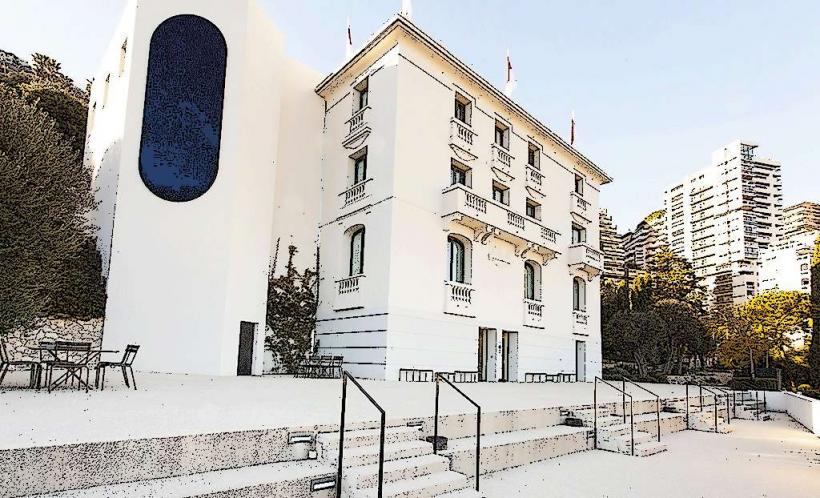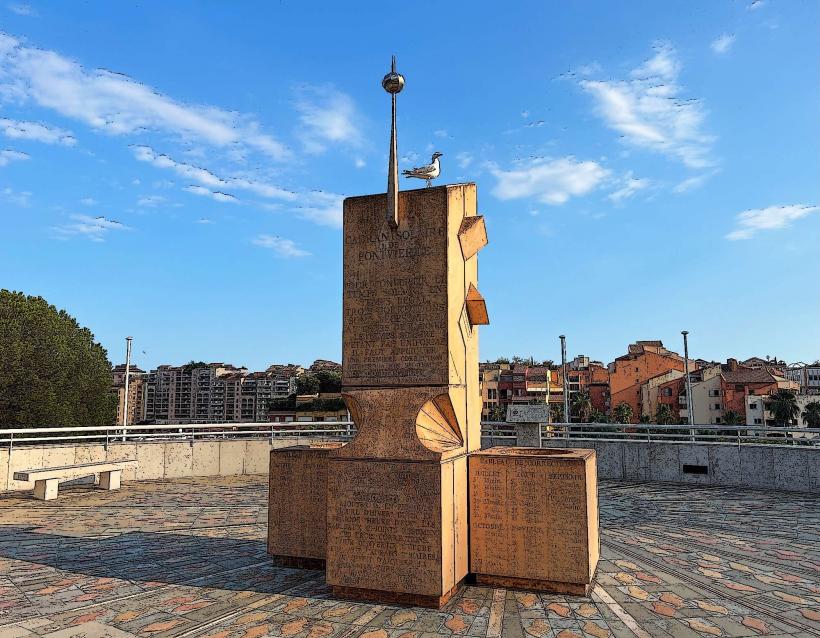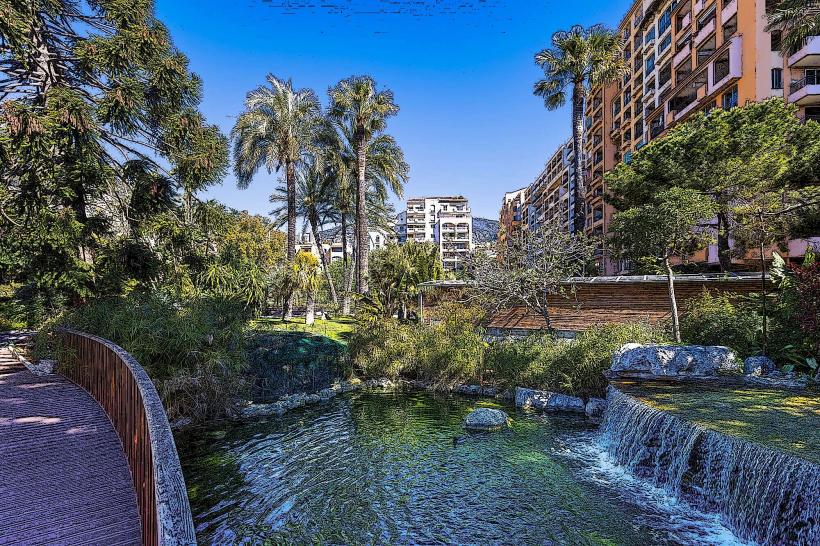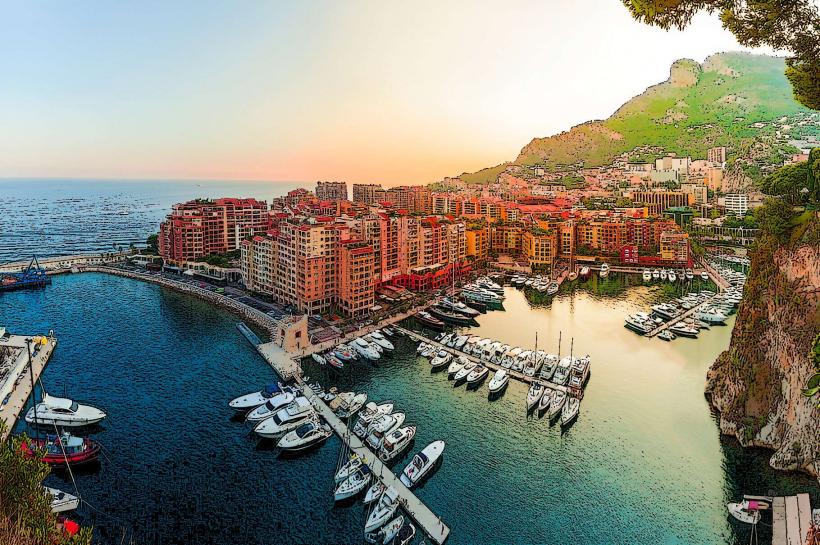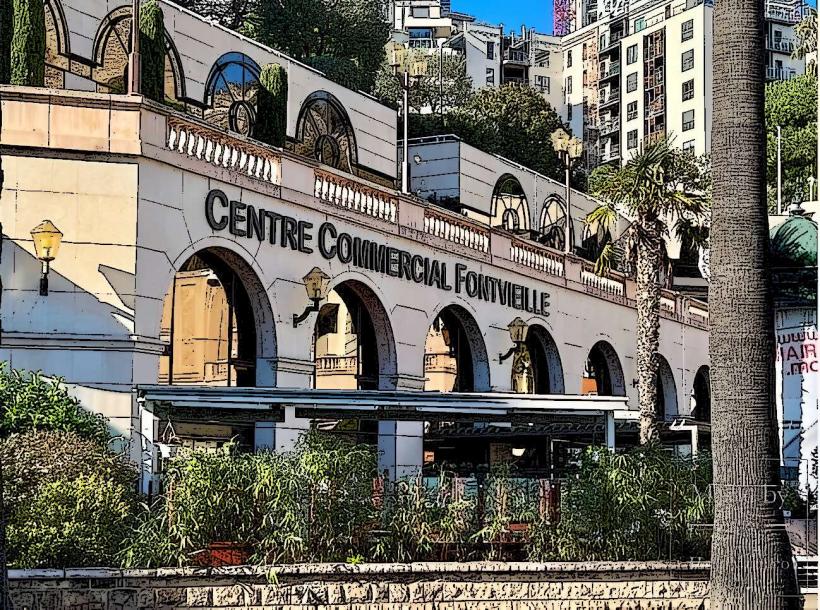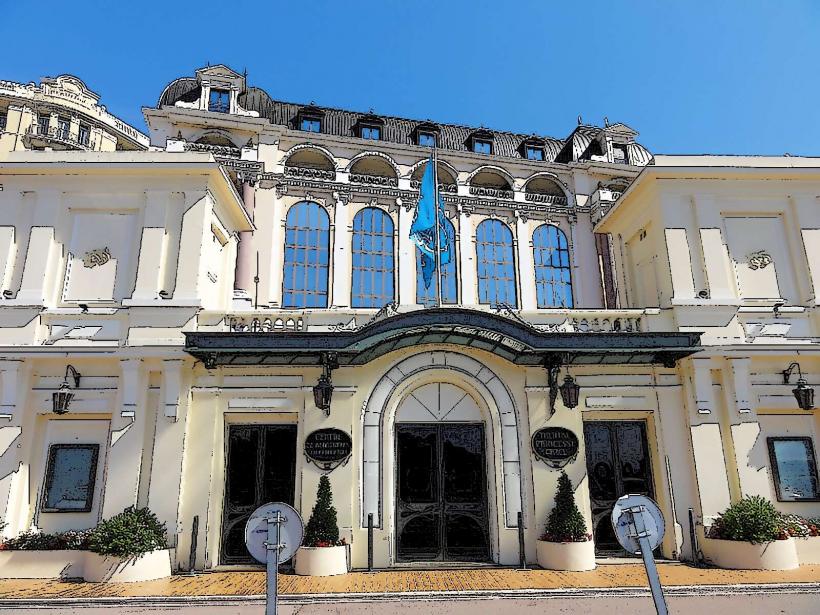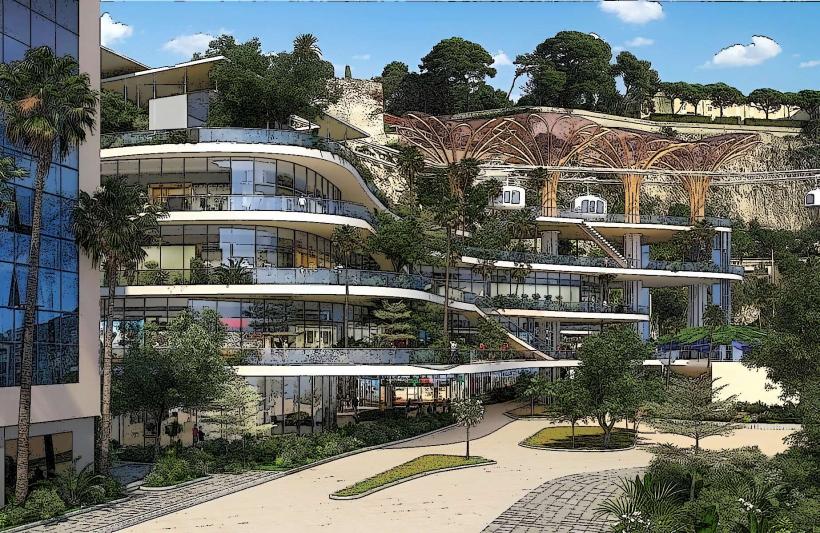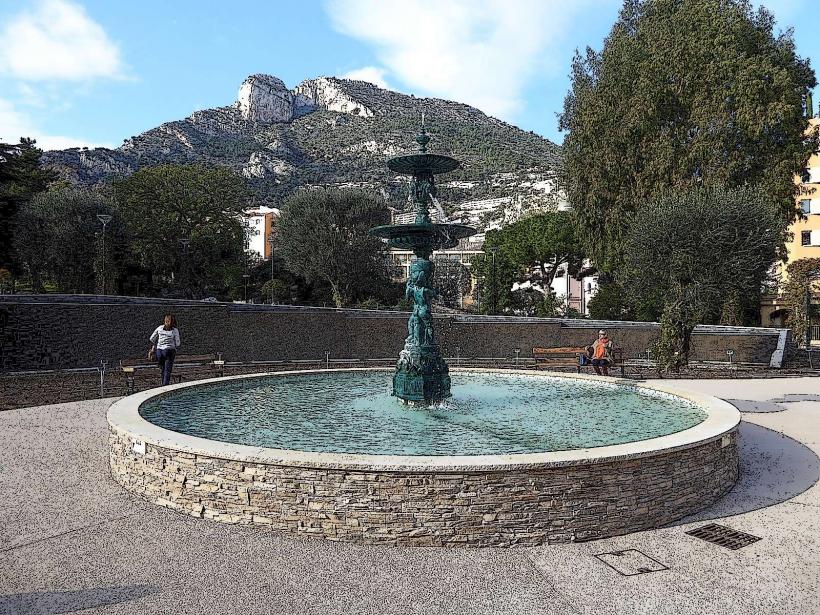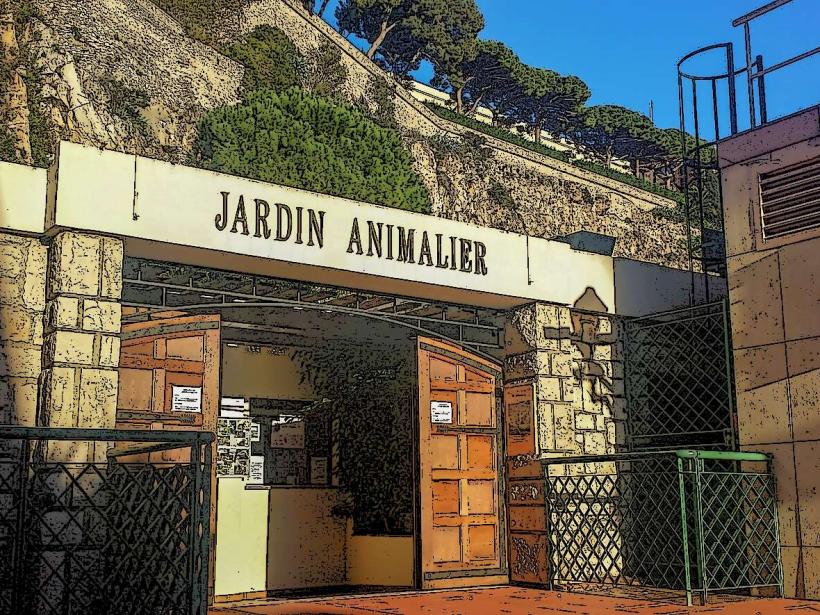Information
City: FontvieilleCountry: Monaco
Continent: Europe
Fontvieille is one of the four traditional districts of Monaco, situated in the westernmost part of the city-state. Known for its modern developments, this area contrasts with Monaco's older, more historic neighborhoods like Monaco-Ville and Monte Carlo. Fontvieille is a key area for commerce, residential living, and leisure, and has been carefully designed to make the most of Monaco's limited space, featuring a mix of contemporary architecture, green spaces, and key landmarks.
Geography and Location
Fontvieille is situated along the Mediterranean coastline, beneath the steep cliffs of the Rock of Monaco. It occupies land that was largely reclaimed from the sea, making it a relatively recent addition to the city-state. The district is bordered by Monaco-Ville to the north, La Condamine to the east, and the Mediterranean Sea to the south.
One of the most remarkable aspects of Fontvieille’s location is its land reclamation from the sea, which began in the late 1960s. This engineering feat transformed a previously unusable area into a thriving district, combining residential areas, commercial zones, parks, and recreational facilities.
History of Fontvieille
Fontvieille is one of the newer districts of Monaco and has undergone significant development in the latter half of the 20th century. The land upon which Fontvieille is built was once a bay and marshland, a largely unused part of Monaco. In the 1960s, Prince Rainier III, recognizing the need for more space for Monaco’s growing population, initiated a massive land reclamation project.
Land Reclamation: The process of creating Fontvieille began in 1966 with the first stages of land reclamation. This ambitious project involved filling in the bay with earth and rubble to create a new area for development. Over the course of several decades, Fontvieille grew into a modern, well-planned district.
Urban Development: As Monaco's population increased and the demand for space intensified, Fontvieille became an essential district for residential and commercial activities. Its development has been carefully planned to ensure that it blends modern architecture with public spaces, green areas, and recreational facilities.
Completion and Growth: Fontvieille was officially completed by the 1980s, becoming a prominent district in Monaco. The area quickly became home to a mixture of luxury apartments, office buildings, and leisure spaces, as well as several iconic landmarks.
Key Landmarks and Attractions in Fontvieille
Fontvieille Marina: The Fontvieille Marina is one of the most picturesque harbors in Monaco. Located at the foot of the Rock of Monaco, it offers luxury yachts and private boats a home, while also providing a scenic spot for visitors to enjoy the Mediterranean views. The marina is connected to the rest of Monaco by roads and pathways, allowing easy access to nearby attractions. The area is also home to several high-end restaurants, bars, and shops along its waterfront, making it a popular destination for those enjoying the sea.
Princess Grace Rose Garden (Jardin Princesse Grace): The Princess Grace Rose Garden, opened in 1984, is a tranquil green space dedicated to Princess Grace of Monaco (Grace Kelly). The garden features a stunning collection of over 300 varieties of roses, and its layout includes fountains, walkways, and beautifully manicured lawns. It is a serene escape from the bustling city and offers visitors a chance to relax while surrounded by nature.
Fontvieille Park: Fontvieille Park is a public park located near the marina. The park provides a space for outdoor activities and relaxation, with lush greenery, walking paths, and areas for picnics. Its design complements the modern architecture of the district, offering a calm and peaceful environment amid the urban landscape.
St. Dévote Church (Église Sainte-Dévote): The Church of St. Dévote is an important religious site in Fontvieille, dedicated to Saint Dévote, the patron saint of Monaco. The church is an important place of worship for Monaco’s residents and visitors alike. The church was built in the late 19th century, and its quaint yet charming design makes it a notable landmark in the district.
Monaco Heliport (Héliport de Monaco): The Monaco Heliport is a unique feature of Fontvieille, offering helicopter service to and from the principality. It is an essential mode of transportation for those arriving or departing from Monaco, especially when traveling to nearby destinations such as the Nice Côte d'Azur Airport. The heliport is one of the most important transportation hubs in Monaco, catering to both locals and international visitors.
The Louis II Stadium: The Louis II Stadium, located in the Fontvieille district, is the home stadium of AS Monaco FC, one of the most successful football clubs in France. The stadium is primarily used for football matches and also hosts other events such as concerts and athletics competitions. The stadium has a capacity of over 18,000 spectators and is an important sports venue for Monaco.
The Museum of Antique Automobiles (Musée des Voitures Anciennes): The Musée des Voitures Anciennes in Fontvieille is a museum dedicated to the Prince Rainier III’s collection of antique cars. The museum showcases classic cars, some dating back to the early 20th century, and gives visitors a glimpse into Monaco’s history of automobile culture. It’s an excellent stop for automobile enthusiasts and those interested in Monaco's royal history.
The Monaco Offshore Racing Club: This club, located in Fontvieille, is dedicated to offshore powerboat racing. The club is an important part of Monaco's nautical culture, and it often organizes races and regattas that attract competitors from around the world.
Economy and Lifestyle in Fontvieille
Fontvieille is a hub for Monaco’s commercial, residential, and recreational sectors. The district’s development was designed to offer both luxury living and business opportunities, making it a key part of Monaco’s economic success.
Residential Living: Fontvieille offers a mix of luxury apartments, modern residences, and penthouses with spectacular views of the Mediterranean. It is home to some of Monaco's wealthiest residents, and many of the buildings are equipped with top-of-the-line amenities, including swimming pools, gyms, and concierge services.
Commerce and Business: Fontvieille has a significant amount of commercial space, with several corporate offices, business centers, and high-end retail establishments. The district attracts both international and local businesses, and its proximity to the harbor and central Monaco makes it an ideal location for those looking to set up business operations in the principality.
Luxury Shopping: The district features several high-end shops and boutiques, offering designer goods, fine jewelry, and luxury products. The retail scene in Fontvieille complements Monaco’s overall reputation as a shopping paradise for the wealthy.
Cultural and Sporting Events: Fontvieille hosts a range of cultural and sporting events, including art exhibitions, the Monaco Grand Prix, and various sporting competitions. The Louis II Stadium is a major venue for football and athletic events, while the Heliport allows easy access for tourists and businesspeople coming for high-profile events.
Transportation in Fontvieille
Fontvieille is well-connected to other parts of Monaco through an efficient transportation network. The district's location makes it a convenient area for both local residents and international visitors to navigate.
Walking and Biking: Fontvieille is a pedestrian-friendly district, with wide avenues and pathways that make it easy to explore on foot or by bike. Visitors can easily walk to other parts of Monaco from Fontvieille, including the nearby Monaco-Ville or La Condamine districts.
Public Transportation: Monaco offers an excellent public transportation system, with buses and monorail services that connect Fontvieille to the rest of Monaco. The district is also close to the Monaco Heliport, allowing visitors to travel by helicopter to destinations such as Nice or Cannes.
Parking: While Monaco has limited space for parking, Fontvieille offers several underground parking lots and multilevel parking structures that provide convenient parking options for residents and visitors.
Conclusion
Fontvieille is a modern and dynamic district of Monaco that blends luxury living, commerce, leisure, and green spaces. Its creation through land reclamation in the 1960s allowed Monaco to expand and evolve into the world-renowned city-state it is today. With key attractions like the Fontvieille Marina, Princess Grace Rose Garden, and Louis II Stadium, along with luxurious residential areas and commercial centers, Fontvieille is a vital part of Monaco’s economy and lifestyle. The district offers visitors a mix of modern architecture, natural beauty, and high-end services, making it a key destination in the principality.

